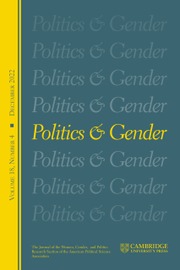Article contents
When Are Gender Quotas Fulfilled? Party Strategy and Historical Memory in Ukrainian City Elections
Published online by Cambridge University Press: 20 June 2022
Abstract
Many studies have investigated why countries adopt gender quotas for their elections. In this article, we answer a different question: why do political parties comply with gender quotas when the costs of noncompliance are absent or minimal? To answer this question, we analyze data from 1,600 party lists and 106 parties competing across 121 cities in the 2015 municipal elections in Ukraine. Our subnational approach tests whether contextual factors flagged by the broader gender literature explain variation in compliance across localities. The results of our models support our contention that Ukrainian political parties behaved strategically in terms of nominations and quota compliance. We find that urbanization and female incumbency fueled quota compliance. Parties, however, were less likely to comply with quotas in cities with more Ukrainian speakers. We suggest that the politics of memory explain this outcome, as Ukrainian speakers are more likely to remember of the costs of Soviet rule.
Keywords
Information
- Type
- Research Article
- Information
- Copyright
- © The Author(s), 2022. Published by Cambridge University Press on behalf of the Women, Gender, and Politics Research Section of the American Political Science Association
References
- 2
- Cited by

